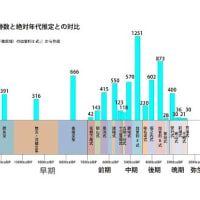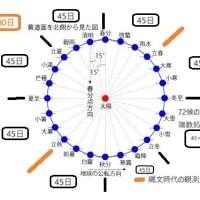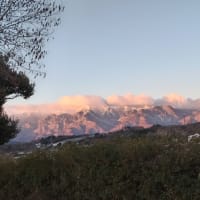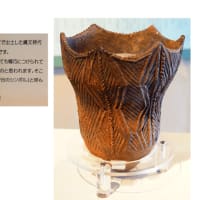Title: Validation of Solar Calendar Observation at Kinsei Ruins
Abstract
Located in Hokuto City, Yamanashi Prefecture,Japan.
The Kinsei site, a Jomon-era site, has the 40-metre big stone arrangment with a stone poles erected in it, which has been found to be a solar calendar observation facility.
The observation points were found to be at the eight solar terms of the calendar dates of Risshun, Risshu and Winter Solstice.
Each observation point also has a corresponding mountain as a landscape feature. The location of the archaeological site has also been simulated by analemma analysis, which displays solar navigation, with similar results.
As the site location and the remains indicate a solar calendar, it can be assumed that the solar calendar was established in the late Jomon period.
From this, it can be assumed that the development of the solar calendar was underway from very early in the Jomon period.
The reason why the two calendar dates of Risshun and Risshu were observed is that they were observed in order to synchronise the solar and lunar calendars, and it is assumed that the two calendars were used in parallel, depending on the region.
The calendar dates indicated by the site basically correspond to the modern solar calendar, and this is the first evidence that the movement of the sun has not changed since 4,500 years ago.
Introduction.
With regard to the existence of a solar calendar in the Jomon period, no archaeological remains have been found that indicate an eight-section calendar.
The Jomon period is considered to be an ancient culture of hunter-gatherer settlement and no agriculture. If a solar calendar does exist, the need for it would be primarily agricultural, which would undermine the existing conception.
Moreover, no remains or calendars have been found so far in any civilisation anywhere in the world that indicate that an accurate solar calendar was created by solar observation. We believe that this will be an epoch-making event in the understanding of the history of civilisation.
1 ) Methods of observation
1. observation of the relationship between the location of the archaeological site and solar navigation
2. observation of the position of the stone arrangements present at the archaeological site and the stone poles present within the arrangements in relation to the landscape in which they are located.
3. to observe what relationship there is between the location of the stone poles observation points and the presumed gnomon positions and the sun's motion.
4.Observations are made on a specific calendar day, so the gnomon used for the observation will be set up and used only for that day. The height of the gnomon should be about 2.4 metres, which is the height at which the shadow reaches the stone pole.
2) Observations.
1. relationship between location and the movement of the sun
It was found that the sunrise on Risshun rises from Mount Kanegatake, commonly known as Mount Kayagatake. On the day of Risshu, the sunrise would be from Mount Kasanashi.Kaikomagatake at sunset on the winter solstice.

These observations could be almost reproduced by analemma analysis.


2.Relationship between stone poles and sunrise within the stone arrangement
The position of the gnomon platforms can be assumed from the stone poles and the corresponding mountains, which mark the rising spring, the rising autumn and the winter solstice. It was also found that the first light of sunrise at the winter solstice is the northern boundary of the stone arrangement and the basis for the stone arrangement design.


3.Observation results for the eight pattern calendar days
The following results were obtained from observations of the sunrise on each of the eight pattern calendar days with the gnomon erected at the estimated position of the gnomon stand in the stone arrangement.
The following results were obtained by observing the sunrise on each of the eight pattern days of the solar calendar: - On the sunrise of Risshun in the current solar calendar, the shadow of the gnomon falls precisely on the Risshun stone bar.
On the day of the winter solstice, if the gnomon is erected at the position of the winter solstice stone pole, the shadow will fall at the position of the gnomon stand on the rising autumn day.
On the day of Risshu, the shadow falls on the Risshu stone pole on a calendar day two days earlier than the current solar calendar's Risshu.

4. About gnomons
The sunrise on the first day of spring rises from a high mountain peak, and for this reason it was found that a gnomon of about 2.4 metres in height is the appropriate height for observing the sunrise on the first day of spring, in order to cast a shadow on the Risshun stone pole.
Therefore, a distance of 22 metres between the gnomon stand and the stone pole and a gnomon height of approximately 2.4 metres are required to determine the calendar day with an accuracy of about one day using a stone pole with a diameter of 25 centimetres.
3) Discussion.
1.The solar calendar of the Jomon period shows different results from the current astronomical calendar dates, and since the calendar dates match the eight-section calendar, we assume that an eight-section calendar was calculated in the Jomon period.
Since the observation points are almost identical to those of the modern solar calendar, and since they were so accurate, we can assume that the need for a calendar in the Jomon period was due to the existence of agriculture and the need to create a cultivation calendar to suit the terrain and local characteristics of the land.
2.About Gnomon
To date, it is unclear where and when gnomons were developed.
The existence of solar calendar observation facilities at the Kinsei site and the big stone arrangment make the existence of gnomons during this period unquestionable.
From this, we consider the development of gnomons to be before the middle of the Jomon period.
The fact that such an accurate solar calendar was made in the late Jomon period suggests that calendar making began well before the late Jomon period.
An examination of the pottery reveals that earthenware with three corrugated projecting mouth rims was produced in the middle Jomon period. It has also been found that 5- and 7-waved projecting-mouth rim pottery was produced after the Late Jomon Period.
In particular, it has been found that during the period when pottery with a 3-wavy projecting mouth rim was produced, a variety of pottery and clay figurines showing the number 3 were produced. The number 3 was the number that was eventually used in the construction of the 24-section calendar. This is because 45 days need to be divided into three to synchronise with the lunar calendar after the date of Risshun has been determined; 15 days is half of the lunar calendar's 30 days of the first lunar month.
Further research has shown that during the Early Jomon period, pottery with 2, 4 and 6 wavy projecting mouthparts was produced. In the Early Jomon period, pottery with 8- and 12-wavy projecting mouthparts was produced. These vessels show characteristic figures related to the solar and lunar calendars.
From this, it can be inferred that solar and lunar calendars began to be produced in the early Jomon period.
2 is thought to indicate a semi-annual calendar in which the 365 days of the year were divided into two halves at the winter and summer solstices.
This calendar was probably constructed to predict the timing of the return of the salmon run for the salmon fishery.
The number 6 indicates that the lunar calendar is six times a half year, and was developed for group tidal mounds on the seashore. The creation of a lunar calendar that could predict the ebb and flow of the tide based on the phases of the moon led to the construction of giant shell mounds from the early Jomon period.
4 is thought to have been used to create a half-yearly calendar with four divisions, similar to the half-yearly base of the lunar calendar, to know the seasons, to find the beginning of spring and the first day of spring, and to create a cultivation calendar, including when to sow seeds of legumes and other crops to be cultivated.
This is thought to represent the evolution of knowledge of numbers and calculations, which enabled the number 365 days to be handled, and the creation of a calendar based on a year instead of a half-year, and a calendar with 12 months. The number 8 is also thought to have led to the creation of the eight-pattern calendar, also based on a year.
Later, in the middle Jomon period, the calendar evolved from the eight-pattern calendar to the twenty-four-pattern calendar, and synchronisation with the lunar calendar was established.
Furthermore, from the numbers 5 and 7, we assume that the solar calendar was based on the 72 pattern solar calendar and the lunar calendar on a seven-day week. These are thought to have been used as working calendars for the advancement of livelihood, and easy-to-use calendars were devised and used.

3.Meaning of the construction of a solar calendar observation facility at the Kinsei site and the big stone arrangement
The calendar can be made accurately by observing Risshun in both the 24 solar terms and the calendar of the 72 solar terms.
Nevertheless, the observation points discovered at the Kinsei site had a Risshu observation point. The reason for this is that it was necessary to observe the lunar phases on a half-yearly basis in order to accurately synchronise the calendar with the lunar calendar.
If the calendars were used differently in the seaside and inland regions, even if the calendar dates were synchronised at Risshun, there would be a discrepancy between the solar calendar and the lunar phase changes six months later at Risshu. In order to prevent this, it is necessary to maintain accurate work schedules in spring and autumn, which is why the clocks are synchronised between the first day of spring and the first day of autumn.
4. assuming that calendars were built in the early Jomon period
The Jomon period saw the development of solar and lunar calendars earlier than anywhere else in the world's ancient civilisations.
The Kinsei site and the big stone arrangement had been discovered and excavated 40 years earlier. If the relationship between location and sun had been investigated without preconceptions in the Jomon period at that time, this discovery would have been made then.
However, the discovery of the existence of a solar calendar in the Jomon period was the result of archaeologists' diligent excavation, documentation and display of artefacts throughout Japan, and we commend and thank them for their efforts in accurately reconstructing and documenting it.
4) Conclusions
1. We consider it certain that the solar calendar dates of the 24 solar terms, i.e. winter solstice, first day of spring and first day of autumn, were observed at the solar calendar observatory at the Kinsei site and the big stone arrangement.
The observation points are also indicated by the mountains in the landscape and reproduced by analemma simulations, so it is clear that the Jomon were aware of solar navigation.
2.If a solar calendar was needed and developed during the Jomon period, it is very likely that it was used to create a cultivation calendar tailored to the characteristics of each region, as agriculture was practised.
3. The development of the solar calendar in the Jomon period
The historical history of the development of the solar calendar is one in which numbers are recorded on earthenware vessels and the historical process can be traced, which we consider to be one of the earliest records in the history of the world and in the history of civilisation.
The definition of 'what is civilisation' is currently not clear, but the development of the calendar to predict the future from the past and present is a milestone in the activity of thought, and we believe that this is the criterion for judging the start of civilisation.
4.The solar calendar observation facilities at the Kinsei site and the Big Arrangement Stone show a calendar date that is the same as the current solar calendar, and this may be the first evidence that proves that the movement of the sun has not changed since 4,500 years ago.
(4) (Footnote)
annotation: Risshun ; the first day of spring, Risshu; the first day of autumn
(Appendix)
1.The big stone arrangement and figurine with a different shape at The Kinsei site
auther Ken Nitsu pub. Shinsen corp.
2. "Let the Kinsei Iseki archaeological site be a World Heritage site" association!
https://blog.8goo.ne.jp/johmonkinseistar
Exclude 8 to show !!!
















